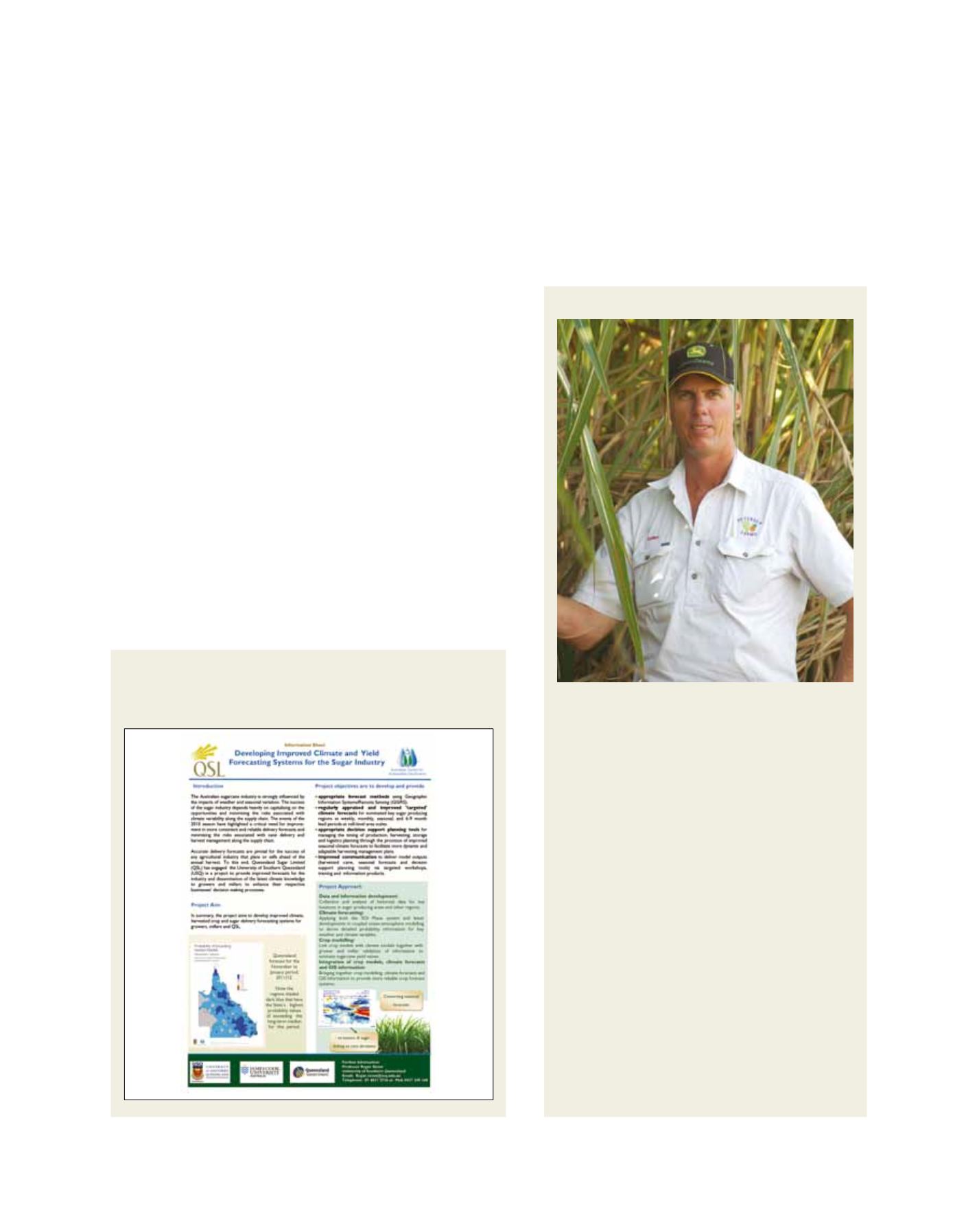

provide the integration necessary for complex outputs – which is
often where the decisions exist.
What next?
The project’s goals are to ensure continued improvement to the
provision of yield and other outputs which involve climate forecast
systems as opposed to mere ‘outputs’. This means there is a need for
awareness of breakthroughs and developments in seasonal forecast
systems (especially coupled models) and that these must be created
in such a way as to allow integration into decision systems.
The research programme and operational outputs described here
could easily be scaled up for application in any region where sugar,
or other crops, is grown.
The project’s main challenges are:
• The need for continued funding – it is easy to lose ongoing
funding with the result that the same industry unnecessarily
suffers from the same impacts for a number of years
• The need for closer interaction with key industry sectors (not
necessarily the ones first thought of such as farmers, but to
address issues across the entire value chain in production)
• Keeping all relevant agencies ‘on side’ as it may not necessarily
be the local agency that has the best research capacity in
integrated climate systems research and development.
This project satisfies the principles of the Global Framework
for Climate Services. All countries could easily benefit from the
approach and the model outlined here can be applied for all coun-
tries, although aspects related to the value of climate systems to
marketing and trade would need further evaluation for certain coun-
[
] 49
A
griculture
Source: QSL, USQ, JCU
Source: USQ/JCU
A climate forecasting fact sheet provided to QSL for the use of
millers, farmers and other general users of the information that
will be provided both during the course of the research and
development stage and when the process becomes operational
Sugar farmer Darren describes his decision-making in
his own words, in early winter 2009, after attending a
‘Managing for Climate’ workshop in Mackay, Queensland,
Australia:
“Climate pattern in transitional stage so I keep a watchful
eye on the climate updates.”
“I take special interest in the sea surface temperatures
(SST) particularly in the Niño 3 region.”
“There is currently some indication of warming in the
Niño 3 region which hints at a possible El Niño pattern
developing.”
“Replant would be kept to a minimum.”
“Harvest drier areas earlier, even if commercial cane sugar
may be affected.”
“We don’t run the farm based solely on climate information
and forecasts, it’s just another tool to consider when
making decisions.”
Darren’s decision-making concerns use of seasonal climate
forecasting information in sugar cane harvesting and
replanting. Note the detail of understanding and ownership
of climate information and forecasting this farmer has
gained through involvement in participatory research and
focused workshop activity.
tries. The programme addresses all three geographic
domains identified in the principles: local farmers and
mills, regional production issues, and global trading
and marketing issues. Operational climate services are
the core element of the project – but there is a need to
recognize the importance of the capability of the under-
lying system to be integrated into other systems such as
agricultural models.
A real-world farmer example
















